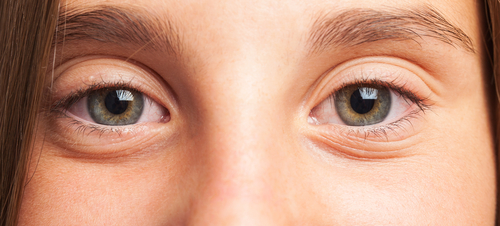Ocular Symptoms as First Signs of Sarcoidosis, Case Report Shows
Written by |

A case was recently reported of a 27-year-old woman who presented ocular pain and moderate vision impairment as the first symptoms of sarcoidosis.
Clinicians from the University of Ottawa in Canada reported the case study in the Canadian Medical Association Journal.
Sarcoidosis is an inflammatory chronic disease that can present several symptoms depending on the tissues affected. In the majority of cases the lungs, lymph nodes, and skin are the primary affected organs. But it can also affect the eyes, liver, heart, and brain.
The disease is characterized by the accumulation of immune cells in structures called granulomas that cause inflammation and induce impaired function of the affected tissues. The cause is unknown.
In the article titled “Ocular involvement in sarcoidosis,” clinicians reported the case of the young woman who complained of bilateral ocular pain that waxed and waned, eye redness, and sensitivity to light (photophobia).
According to the patient’s family doctor, in the following months the ocular symptoms progressed and the patient also developed hoarseness and began to have difficulty breathing. At this point, all symptoms were negatively impacting the capacity of the patient to perform daily life activities.
After her family doctor referred her to an otolaryngologist and a retina specialist for an evaluation, it was possible to determine that the patient had a moderately reduced visual perception. She also presented formation of small nodules on the inner surface of her lower eyelids and several ocular alterations consistent with inflammation of the middle layer of tissue in the eye wall (uveitis).
A detailed lab workup showed that the inflammatory response was not due to infection.
In addition, the patient presented elevated blood levels of lysozyme, calcium, and angiotensin converting enzyme (ACE), all consistent with a possible autoimmune disease diagnosis.
Further investigation of the patient’s upper airway symptoms, which included a biopsy of laryngeal nodules, showed inflammation due to an accumulation of granulomas.
Taking all the symptoms and clinical evaluations together, it was possible for the physicians to confirm a diagnosis of sarcoidosis.
“Ocular involvement occurs in more than 75% of patients and is the presenting symptom in 20%–30% of cases, most commonly with uveitis and conjunctival nodules, as seen in our patient,” the authors stated in the report.
Although in this clinical case both the signs of uveitis and the blood biochemical analysis were concurrent with a sarcoidosis diagnosis, it was only possible to confirm it after a tissue biopsy showing the granulomatous nature of the disease.
The main therapy goals in this patient’s case are to restore vision and prevent complications of eye inflammation. Standard management treatment involves local or systemic corticosteroid administration, and in more severe or chronic cases, drugs that can modulate the immune system’s pro-inflammatory response.
These therapeutic strategies commonly lead to good visual prognosis, but it depends on the severity of the patient’s symptoms.
“Given the complex nature of ocular sarcoidosis, early referral to an ophthalmologist and multidisciplinary care are suggested,” the authors concluded.





